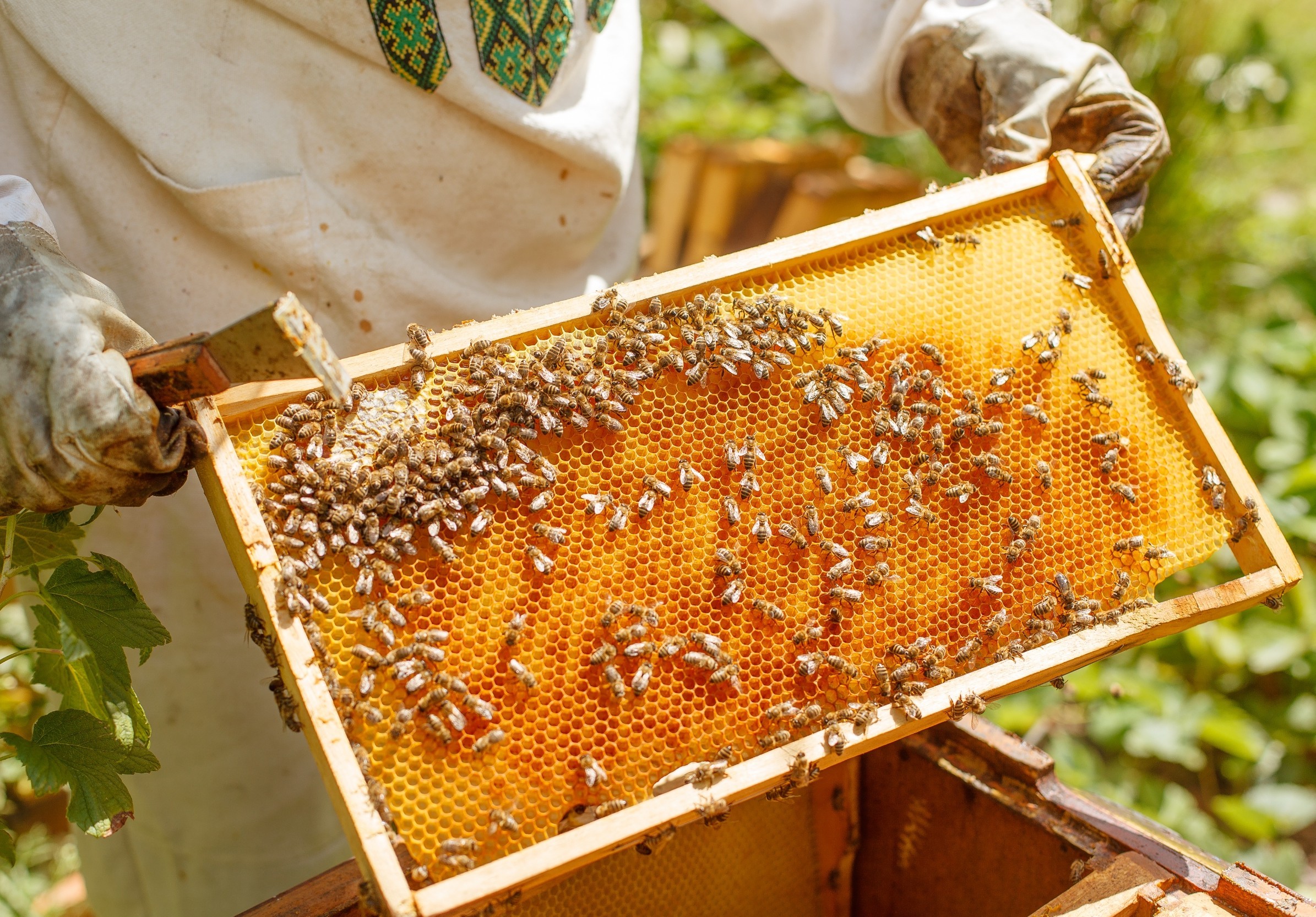Bees are the quiet workers behind much of the world’s food. Their role in pollination underpins ecosystems and agriculture alike. Yet honeybee populations are shrinking due to climate stress, pesticides, diseases, and loss of floral diversity. This crisis now threatens global food security.
A new international study led by the University of Oxford introduces an innovative food supplement for honeybees. Using engineered yeast, the researchers recreated essential sterols usually found in pollen, creating a diet that supports healthier, more resilient colonies.
Why sterols matter
Honeybees cannot make sterols on their own. Unlike most insects that convert dietary sterols into cholesterol, bees must directly consume them. These molecules are critical for cell membranes and hormones. Without them, colonies fail to reproduce and collapse.
Normally, bees obtain sterols from pollen stored as bee bread. Nurse bees digest this pollen, transfer sterols into their glands, and then feed larvae through glandular secretions.
Despite the diversity of sterols in pollen, only six dominate in bee tissues: 24-methylenecholesterol, campesterol, isofucosterol, β-sitosterol, cholesterol, and desmosterol.
Yeast-based bee diet
To replace these rare compounds, scientists turned to Yarrowia lipolytica, a yeast already considered safe in aquaculture. Using CRISPR-Cas9 editing, they reprogrammed its metabolic pathways to produce the precise sterols bees require.
This involved deleting certain genes and introducing others from plants, algae, and even bacteria. Over several steps, the yeast was redesigned to yield a mixture of all six sterols.
The yeast biomass was then dried into powder and added to artificial diets. This made it possible to deliver complete nutrition without harvesting natural pollen at unsustainable scales.
Feeding trials in glasshouses
Colonies were placed in controlled glasshouses and fed only these diets for three months. The results were clear: bees given the sterol-rich yeast raised up to 15 times more larvae than those on standard substitutes.
These colonies also kept brood production going long after sterol-deficient colonies had stopped.
Interestingly, when researchers measured sterols in the larvae, they matched those found in naturally foraging colonies. This showed that bees selectively transfer only the most vital sterols to their young.
Yeast diets help bees outdoors
Additional semi-field trials reinforced the results. Colonies fed the mixed-sterol yeast diet maintained strong brood production into late summer, while control groups dwindled.
Even when a heatwave reduced bee numbers across all groups, supplemented colonies recovered more quickly once nurse bees were added back.
Sterols from the engineered yeast accumulated in nurse bees but were selectively passed to the brood, confirming a fine-tuned biological mechanism.
The sterol surrogate produced during yeast engineering, tetrahymanol, was consumed but never appeared in larvae, suggesting bees filter out unnecessary molecules.
Competition for limited pollen
Honeybees pollinate more than 70% of leading crops, including almonds, apples, and cherries. Yet losses in U.S. colonies have reached nearly half per year, with forecasts predicting even higher numbers.
For honeybees, poor nutrition amplifies the damage caused by mites, viruses, and pesticides.
“Honey bees are critically important pollinators for the production of crops such as almonds, apples, and cherries and so are present in some crop locations in very large numbers, which can put pressure on limited wildflowers,” said study co-author Professor Phil Stevenson.
“Our engineered supplement could therefore benefit wild bee species by reducing competition for limited pollen supplies.”
Bee diets and food security
“We rely on honey bees to pollinate one in three bites of our food, yet bees face many stressors,” said Danielle Downey of Project Apis m., who was not involved in the study.
“Good nutrition is one way to improve their resilience to these threats, and in landscapes with dwindling natural forage for bees, a more complete diet supplement could be a game changer.”
The yeast biomass also offers proteins, fats, and vitamins. The researchers suggest it could be further engineered to add antioxidants, carotenoids, or beneficial fatty acids, creating a truly holistic feed for pollinators.
Future of bees and yeast nutrition
While the results are promising, large-scale field studies are still needed. These will test how colonies perform in open environments and measure long-term pollination effects. If successful, farmers could see this supplement within two years.
Beyond honeybees, this approach could extend to other pollinators or even farmed insects, strengthening the foundation of sustainable agriculture worldwide.
What began as a molecular tweak in yeast could reshape the survival prospects of pollinators and, in turn, our global food future.
The research was in collaboration with Kew Gardens, the University of Greenwich, and the Technical University of Denmark.
The study is published in the journal Nature.
—–
Like what you read? Subscribe to our newsletter for engaging articles, exclusive content, and the latest updates.
Check us out on EarthSnap, a free app brought to you by Eric Ralls and Earth.com.
—–
